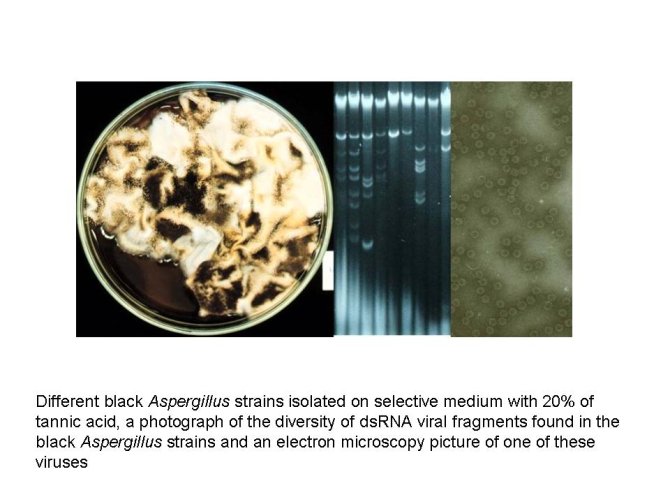Project
Selfish genetic elements in the black Aspergilli
Description:
The asexual filamentous fungi belonging to the aggregate of black Aspergillus species occur abundantly throughout the world and several of them are of important use in industry. In nature, the black Aspergilli are very rarely capable of hyphal anastomosis (vegetative incompatible) and exchange of selfish elements like viruses or transposons thus seems limited. However, viruses occur quite commonly in the black Aspergilli and several different transposable elements have been found. With the large collection of natural isolates of the department of genetics and the availability of the genome sequence of A. niger many population genetic studies can be done.

Used skills:
microbiological and molecular biology skills, bioinformatics, some statistical analysis to interpret the results.
Requirements:
Molecular and Evolutionary Ecology (GEN20304) and Genetic Analysis Tools and Concepts (GEN30306) are good preparations.
Reference:
(i) van Diepeningen et al (2004) Efficient degradation of tannin by black Aspergillus species. Mycol. Res. 108: 919-925; (ii) van Diepeningen et al (1998) Intra- and interspecies virus transfer in Aspergilli via protoplast fusion. Fungal Genet Biol 25:171-80; (iii) Van Diepeningen et al (1997) Heterokaryon incompatibility blocks virus transfer among natural isolates of black Aspergilli. Curr Genet 32:209-17.